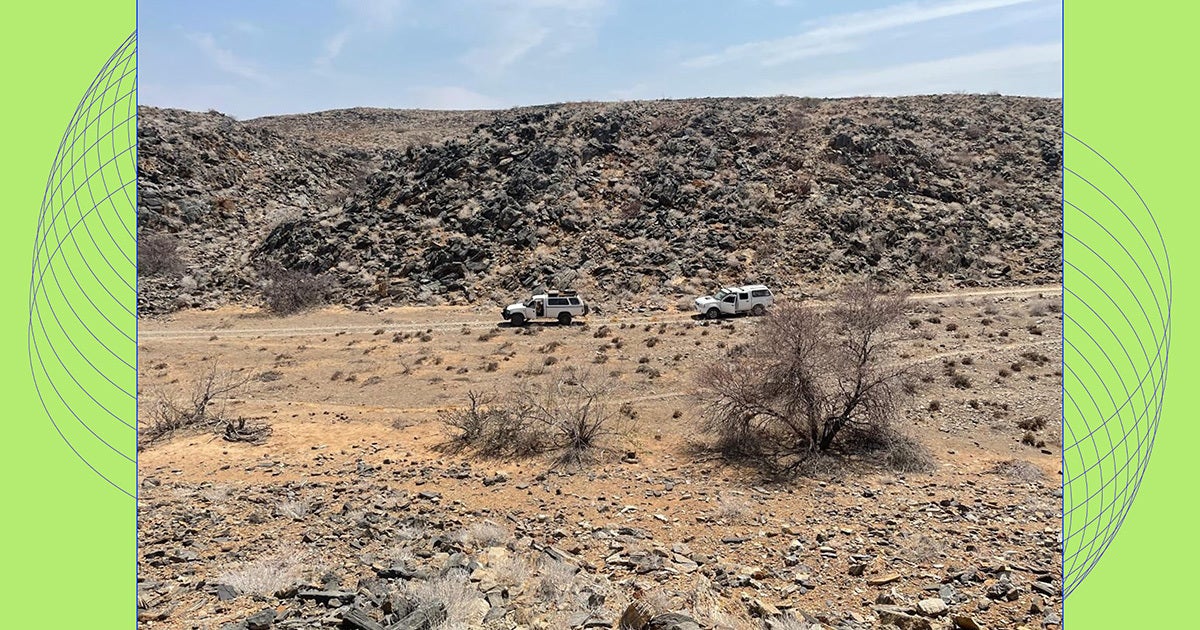Subterranean Mysteries: Researchers Uncover Enigmatic Underground Networks Spanning Continents
Science
2025-04-05 14:30:38Content

In the sun-scorched landscapes of Africa and the Middle East, a scientific mystery has emerged that's captivating researchers worldwide. Tiny, intricate tubes hidden within marble and limestone are challenging everything we know about geological formations.
German scientists from Johannes Gutenberg University Mainz have stumbled upon an extraordinary discovery that defies conventional explanation. Cees Passchier, the lead researcher who first encountered these enigmatic tunnels in Namibia 15 years ago, can barely contain his excitement. "These aren't just random geological markings," he emphasizes. "Something living appears to have created these precise, deliberate passages."
The tubes, microscopic yet meticulously crafted, have left scientists bewildered. Unlike typical rock formations shaped by natural geological processes, these tunnels suggest an intelligent, biological origin. Their uniform structure and unexpected complexity hint at a potential breakthrough in understanding ancient microbial life or unknown environmental interactions.
As researchers continue to investigate, these mysterious tubes represent more than just a scientific curiosity—they're a tantalizing glimpse into potential hidden narratives of life in some of Earth's most unforgiving environments. The discovery promises to unlock new understanding about the resilience and creativity of life itself.
Mysterious Microscopic Tunnels: Unraveling the Enigma of Subterranean Formations in Arid Landscapes
In the vast and unforgiving terrains of Africa and the Middle East, a scientific mystery has emerged that challenges our understanding of geological and biological processes. Researchers have stumbled upon an extraordinary phenomenon that defies conventional explanation: intricate microscopic tunnels carved into seemingly impenetrable rock formations, sparking intense curiosity and scientific speculation.Uncovering Nature's Hidden Architectural Marvels
The Unexpected Discovery
Geological exploration has long been a realm of surprises, but the recent findings by researchers from Johannes Gutenberg University Mainz have pushed the boundaries of scientific understanding. During an expedition in the arid landscapes of Namibia, scientists encountered a series of minuscule tubular structures embedded within marble and limestone formations that immediately challenged existing scientific paradigms. The intricate tunnels, barely visible to the naked eye, presented a complex puzzle that defied traditional geological explanations. Dr. Cees Passchier, the lead researcher who first documented these remarkable structures fifteen years ago, expressed profound astonishment at their inexplicable nature. These microscopic passages appeared too precise, too intentional to be the result of random geological processes.Potential Biological Signatures
The implications of these mysterious tunnels extend far beyond mere geological curiosity. Scientists speculate that these structures might represent evidence of microscopic life forms capable of manipulating solid rock in ways previously unimagined. The precision and consistency of these tunnels suggest a level of biological engineering that challenges our current understanding of microbial capabilities. Researchers are particularly intrigued by the potential biological signatures embedded within these rock formations. The tunnels' uniform structure and apparent intentionality hint at the possibility of undiscovered microorganisms with extraordinary adaptive capabilities. These findings could potentially revolutionize our comprehension of life's resilience and adaptability in extreme environments.Technological and Scientific Implications
The discovery opens up numerous research avenues across multiple scientific disciplines. Geologists, microbiologists, and planetary scientists are now collaborating to unravel the complex mechanisms behind these microscopic tunnels. Advanced imaging technologies and sophisticated analytical techniques are being employed to decode the intricate details of these formations. Potential applications of this research extend beyond pure scientific curiosity. Understanding how microscopic entities can interact with and modify solid rock could provide groundbreaking insights into geological processes, environmental adaptation, and potentially even extraterrestrial life exploration strategies.Challenging Scientific Paradigms
These unexpected discoveries serve as a powerful reminder of the limitations of our current scientific knowledge. The tunnels represent more than just a geological anomaly; they symbolize the continuous process of scientific inquiry and the perpetual expansion of human understanding. By challenging established scientific narratives, researchers are pushing the boundaries of what we consider possible. The microscopic tunnels discovered in Namibia's harsh landscapes represent a testament to the complexity and mystery inherent in our natural world, inviting further exploration and deeper scientific investigation.RELATED NEWS
Science

Molecular Marvels: Breakthrough Compounds Challenge Explosives Benchmark
2025-04-05 22:51:20
Science

Science Under Siege: How Trump's Policies Are Dismantling Research Foundations
2025-03-31 15:00:13






